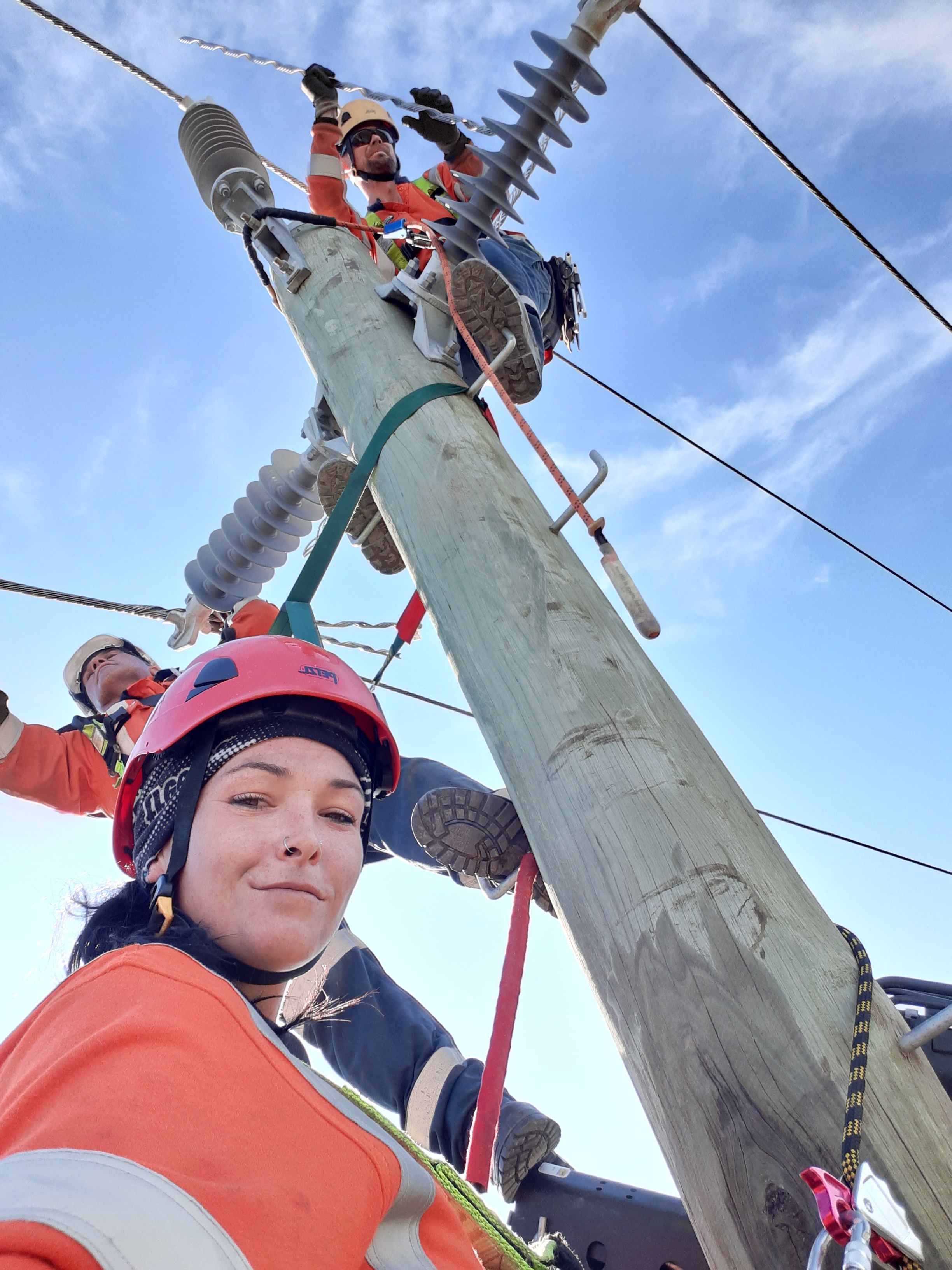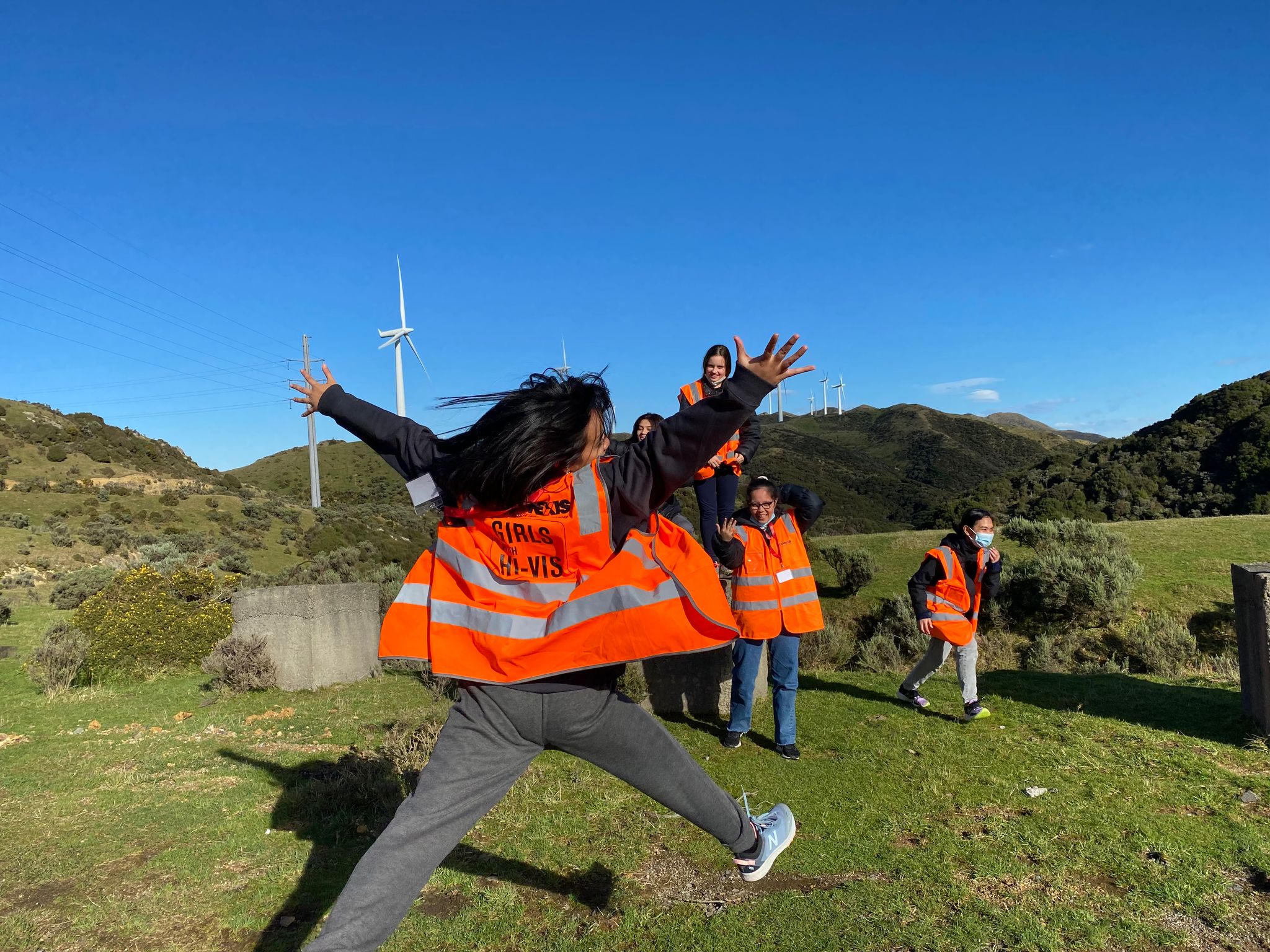Ten years of promoting infrastructure careers to womenSponsored
The momentum has shifted in the campaign to recruit more women into infrastructure careers.
New Zealand’s civil construction, energy, telecommunications and 3Waters companies all see the potential in recruiting more women to help them meet several skills shortages across the industry, says Kaarin Gaukrodger, director of Connexis, infrastructure training provider and business division of Te Pūkenga.
The challenge now is to make sure those women are aware of the opportunities available in infrastructure, and how to access them, she says.
Meeting that challenge has been the primary goal of Connexis’ Ultimit: Women in Infrastructure initiative, now in its tenth year, and Girls with Hi-Vis® (GWHV), an annual month-long campaign run by Connexis that offers female secondary school students opportunities for hands-on experience of the skills required by the industry and to hear from other women already finding success there.
Ultimit has played an important role in promoting the opportunities and advantages of employing more women in infrastructure over the past 10 years, says Gaukrodger.
“It has helped change attitudes. Over the past 10 years there has been a significant shift among infrastructure businesses where many are now pro-actively looking to bring more women on board in all kinds of roles.
“Where change has been slower is in making those roles visible and appealing to the next generation of young women.”
Recent reports such as Re-Energise, the ESI’s workforce development strategy, have highlighted the need to increase the visibility of careers in the sector to attract the right people, and help address skills shortages. Gaukrodger argues that is particularly relevant and important in attracting more women.
“What is evident as we work to attract women into infrastructure careers, is that many young women don’t realise the sector is even an option for them when they leave school,” she says.
“Infrastructure jobs haven’t traditionally been presented to them as an option, outside of administration roles. As an industry we have to keep working to make sure women not only know these jobs are open to them, but how to access them,” she says.
“I think traditionally it’s been assumed girls wouldn’t be interested in some of these jobs. Yet, every year, at every Girls with Hi-Vis event, it is just as evident that the opportunity to work in varied, active and often physical jobs, as part of a team, doing tasks that challenge their minds with problem solving and offer the opportunity to travel to remote parts of the country, is just as appealing to women, as it is to men.”
Gaukrodger says GWHV®, run each June and now in its seventh year, complements the strategic diversity work of Ultimit, by connecting young women with potential career options but also with employers who can give them a tangible pathway into the industry and help them get qualified.
This year’s GWHV® saw more than 400 students from more than 60 schools attend 26 events hosted by 15 different infrastructure companies. Events were held in Auckland, Waikato, Bay of Plenty, Gisborne, Hawke's Bay, Taranaki, Wellington, Christchurch, McKenzie, Otago and Southland.
Several key players in the electricity supply industry (ESI) were involved in the 2022. Some of these included:
- Meridian Energy: Manapouri Power Station Tour, Southland
- Meridian Energy: West Wind Farm Tour, Wellington
- Meridian Energy: Benmore Power Station Tour, South Canterbury
- Genesis Energy: Tokaanu Power Station Tour, Tongariro
- Genesis Energy: Huntly Power Station Tour, Waikato
At each event the host company took students from several local high schools through activities involving everything from engineering and wiring to problem solving and team building.

Women in different roles in each company also spoke about their experiences, how they got into the ESI, what they liked about it, and the types of careers available in the industry.
“These industry-hosted events teach the students not just about what infrastructure roles involve, but how they can earn a good income and gain qualifications while they work which makes it an appealing alternative to academic study,” says Gaukrodger.
With an estimated 44,000 additional workers needed over the next five years to complete key infrastructure projects, attracting greater numbers of women is vital, she says.
“The Ultimit is about promoting more women into infrastructure but ultimately it is about creating opportunities to build a more diverse workforce, with the overall goal of ensuring a continuous supply of skilled trade and technical people.
“We have made great in-roads since Ultimit was launched 10 years ago, but ongoing skills shortages across most economic sectors means there is always more work to be done, to ensure ESI, and infrastructure in general is a visible and viable choice for anybody making decisions about their professional development and future.”
Ultimit trailblazer
GWHV® is an important and impressive legacy of the Ultimit initiative launched more than 10 years ago in 2011 with a focus on increasing the number of women working in infrastructure and overcoming entrenched views that the sector “wasn’t for women”.
As part of that early Ultimit initiative, two groups of female trainees were trained and employed by Northpower and Electrix.
Robyn Dawes, now a design estimator for Northpower in Auckland, was one of those first women to get qualified with her NZ Certificate in Electricity Supply (Cable Jointing High Voltage) under the Ultimit initiative. Her career began as a trainee lines technician in Dargaville.
These days, estimating pricing for larger connection projects, Robyn splits her time 80:20 between being in the office and out in the field. She says there are still barriers to women entering the trades.
“It does need a bit of shake-up. Women are more than capable but they go to uni instead because they haven’t even heard about trades,” she says.

Annual Connections
Annual Connection 2022 is a unique three-day event, bringing together cable jointers, line mechanics and ESI stakeholders from across New Zealand. The event, organised by Connexis in conjunction with the ESI, consists of competitions, a suppliers expo, and closes with the Connexis Excellence Awards.
This year’s event is being hosted by Electra in Levin on 27-29 September.
In honour of the 10th anniversary of Ultimit, the first all-women team of line mechanics will compete in the skills competition.
These competitions are an important, and always-popular way for those working in the ESI to showcase their skill and expertise to their colleagues and employers. School groups are also invited, presenting a unique opportunity for students to see just what working in the ESI can be like.
“Annual Connection is always an excellent opportunity to shine a positive light on our skilled people, as well as the industry in general,” says Gaukrodger. “Including an all-female crew to mark 10 years of Ultimit will showcase both the capability of women and the value of a gender-diverse workforce in helping address skills shortages.
“Hopefully, the skills of that crew will also catch the eye of some of our young female school visitors to the competition and make them want to find out more about what the ESI can offer them in terms of careers and training.”
Meridian Energy, West Wind Farm, Mākara, Wellington
“I could see myself doing this and now that I have attended this event I am more inspired to go down this path.” - Manuela, student, St Catherine’s College.
“I have a sore face from smiling after seeing the girls have such a great time.” - Jodene Fitness, teacher, Hutt Valley High School
“It was a great day because there were a lot of practical things to experience. It’s nice for the girls to learn about other jobs available to them outside of the gender stereotypes,” - Heather Miller, teacher, St Catherine's College

